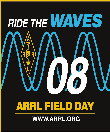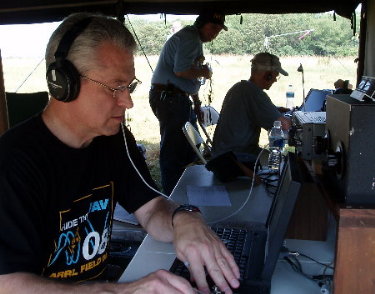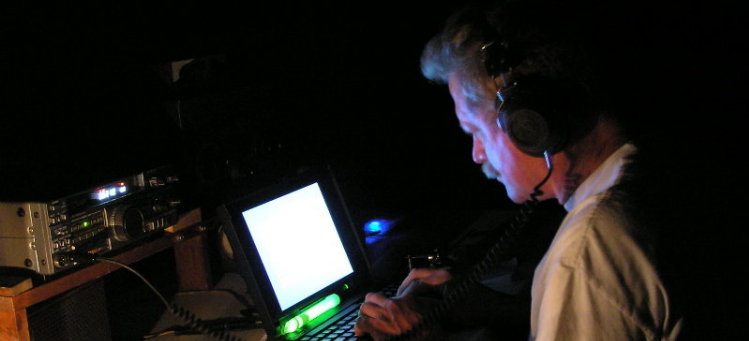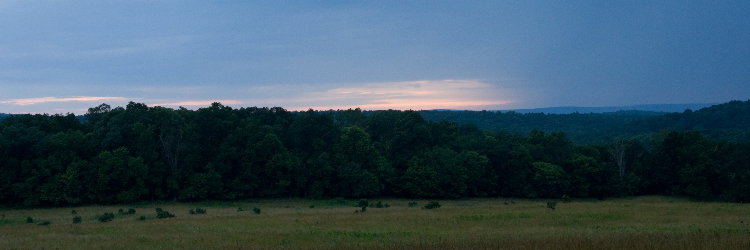 |
|
 |
|
|
We had some super operators handling the station. You know it's always a little hard to find good CW operators.This year, we missed Jim Banks - WØMAZ and Mark Johnson - W3ZI. Hopefully, we'll bring a few more on board this coming year. Anyway, some of us stayed on a little longer - like "Stay In The Chair." Jeff Crawford - KØZR of Leesburg, Tom Garasic - NA4MA of Haymarket, and Paul Dluehosh - N4PD of Leesburg did a super job. John Unger - W4AU with his rocket launcher helped put the 80-Meter dipole up fifty-feet on Saturday morning. |
 |
|
| This Station Flew High on 15-Meters Charlie Whiskey |
|
Our efforts on Station #1 started right after the April LARG Field Day Committee organization meeting. It's hard not to think about what new stuff and tricks you will try on Field Day. We missed being able to use Mark Johnson - W3ZI's Kenwood TS-850 Transceiver. It does hear better than the LARG's Kenwood TS-440 Transceiver. After seeing how well the Elecraft K3 performed on 75 and 40 Meter Fone, maybe we should look for one for next year. Anyway, we planned for 80-Meters to be the main band but would also try 15-Meters on Saturday afternoon and late on Sunday morning. As you'll see below, 15-Meters was a nice surprise. And, we would also check 10-Meters for CW and Fone openings since no other station was assigned to 10-Meters. This proved to be somewhat successful. Maybe next year, we'll stack the 3-element 10-Meter yagi above the 15-Meter yagi. |

Jeff Crawford - KØZR |
Paul Dluehosh - N4PD |
 Tom Garasic - NA4MA |
|
 Jeff Crawford - KØZR |
|
The Rates At Station #1 We opened on 15-Meters CW hoping to put a few in the log before settling down on 80-Meters for the night. Well, we were pleasantly surprised. There were many nice signals on 15-Meters. By 6 PM we had 134 in the log. Signals dried up and we went to 80-Meters. Then around 8 PM the threat of a storm forced us to shutdown for about an hour. Returning, the band was steady with about 40 an hour till past mid-night. Overnight was wasn't as much success. By sunrise we had 500 in the log - just a little short of the numbers last year. 80-Meters didn't improve much and by 9 AM we were on 15-Meters. Conditions here were much better than Saturday and we add another 202 QSOs on 15-Meters. After 11 AM we checked 10-Meters for kicks and worked 20 on CW and another 7 on SSB. We could have used a yagi on 10-Meters for we stood in line several times. Overall, before dupe checking, the log showed 770 QSOs - 406 0n 80-CW, 337 on 15-CW, 20 on 10-CW and 7 on 10-Fone. These numbers shrunk to 396, 319, 19 and 7 after dupes were removed. The best hour on 80-CW was 50 at mid-night and on 15-CW it was 61 at 11 AM on Sunday. This was overall better than last year when we had 596 good QSOs. Thanks for all the help and good operating. |
You can see when we closed for the approaching storm and the best rates on each band Below, you can see how our operators did. |
|
|
The Antennas Station #1 operated with two antennas as we did the last few years. The 80-Meter CW used a full-size dipole up about 50-feet thanks to John Unger - W4AU's rocket launcher. For the third year we had the auto trailer mounted 28-foot ladder tower with the 3-element Hy-Gain 15-Meter yagi antenna. The dipole loaded OK on 10-Meters through a Johnson Match Box but propagation was more north-south so we had to work hard for some of the mid-west contacts. After three calls, we would move on. A yagi on 10-Meters would have made things much easier - maybe next year. I used an old Alliance antenna rotor on the 15-Meter yagi. |
|
 The Antennas for Station #1 |
|
|
|
|
|
The 80-Meter Dipole was also used on 10-Meters |
|
 Isn't That A Nice Take-Off View To The West ? |
|
About Us | Site Map | Contact Us | Established 13 September 1999, Copyright 1999-2007, All Rights Reserved by Loudoun Amateur Radio Group. See Credits Published In Announcements Section. Internet Hosting Provided As A Public Service By MicroNeil Research Corporation |